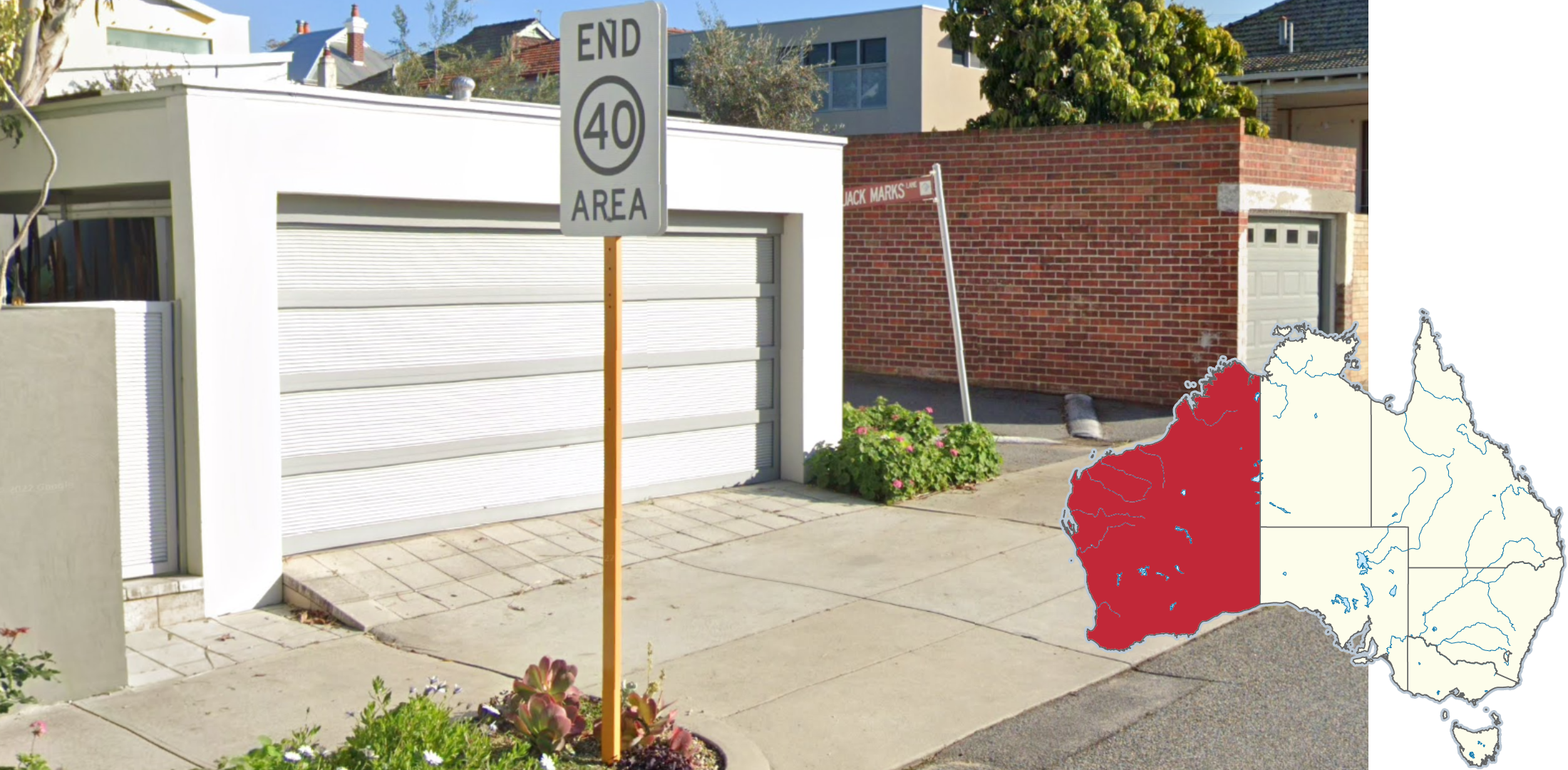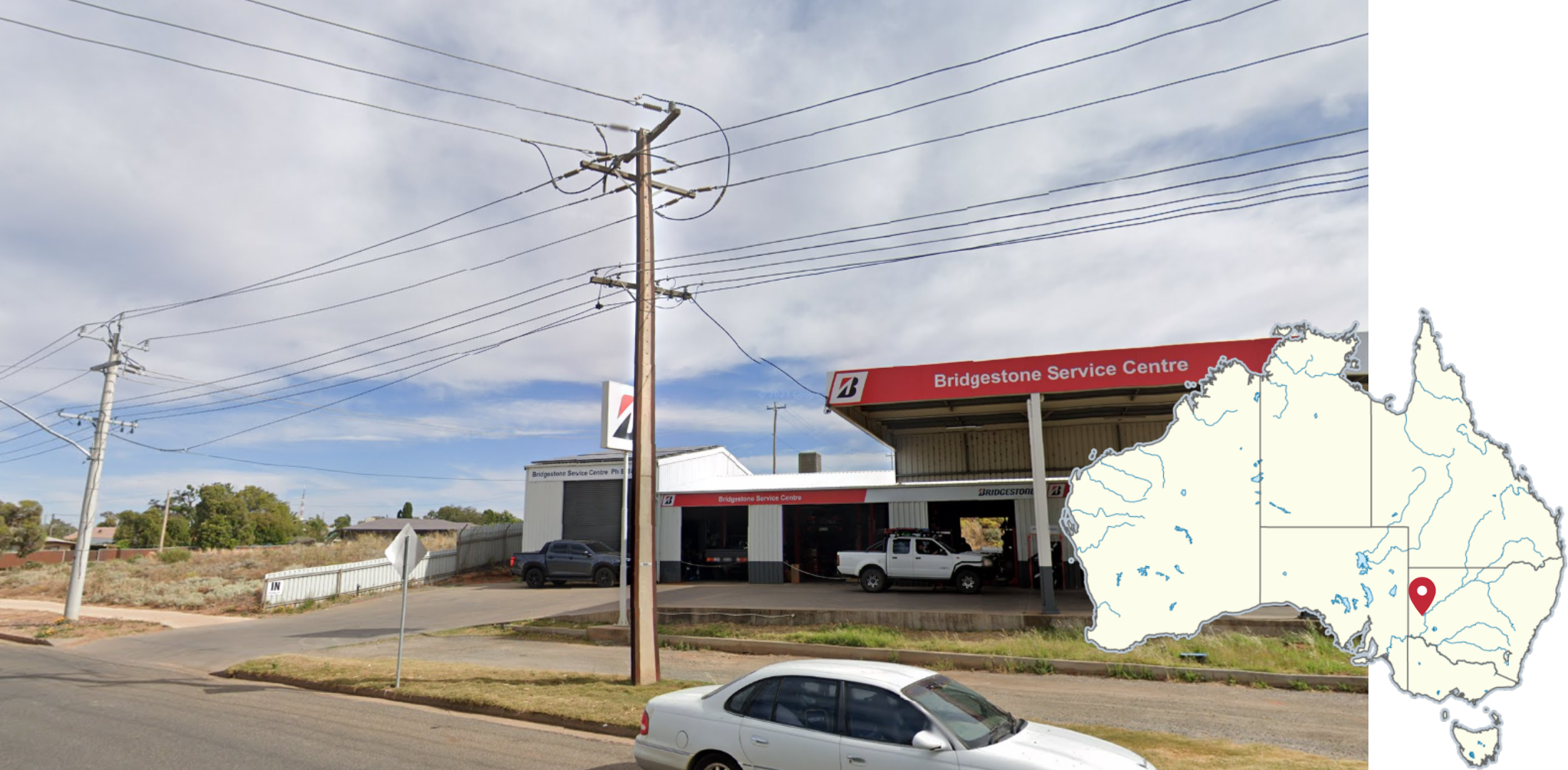
Australia
Australia drives on the left.
NOTE: A handful of other countries also drive on the left. See this infographic for more information.
Australia uses almost exclusively white road lines, with a few rare exceptions in alpine regions such as Mount Kosciuszko and Mount Hotham.
NOTE: If you are considering guessing in Australia, but see yellow outside lines or a yellow middle line, you will probably be in South Africa or New Zealand respectively. Note that New Zealand can have all white road lines as well.
Each state has a unique bus stop design. These are quite common in urban rounds, so are worth learning. Darwin bus stops are usually concrete shelters.
NOTE: The designs may vary slightly, but should still be recognisable. There are multiple versions of Tasmanian bus stops, but most of them should have the word ‘metro’ on it.
You can click on the image to enlarge it.
Infrastructure
The iconic Stobie pole, made of steel and concrete, is specific to South Australia. The pole tops (trident or rotated letter “E”) are also unique.
NOTE: A few thousand of these poles can be found in other states, most notably Tasmania.
According to a 2006 review, 64% of all concrete poles are located in the state of Victoria.
Victorian pole tops feature 3 circular coils; 2 on the sides, and 1 vertical one at the top. At times, other extensions can be seen on these poles.
Poletops in Tasmania often consist of a thin metal crossbar bent 90 degrees to form an L-shape.
NOTE: Regular Australian crossbars are usually made out of wood.
Circular blue stickers can be found on Queensland poles. You may occasionally see the same type of sticker in a different colour, or with the colour almost completely faded.
NOTE: Blue stickers can also be found on French poles.
Poles in Western Australia often have green painted bases, and sometimes a white sticker or a red and white band attached.
Bollards with brown paint at the bottom are most commonly found in Western Australia.
NOTE: Brown paint at the bottom of exposed bollards can also rarely be seen in other states, however the brown section will not be as large.
Landscape
The area around Warramboo in SA to Madura in WA has a unique landscape. Vegetation is quite dry and is made up of shrubs and wide crowned eucalyptus. In addition, the soil is sandy with a slight orange tint.
The dry area east of Adelaide and into northwestern Victoria has a similar landscape, with the same vegetation but usually with whiter soil.
NOTE: The soil gets more red in the WA side. Redder soil can also be seen more inland on the Victorian side around Mildura. In addition, the Nullarbor Highway has a distinct landscape.
Lush green or golden fields can be found in this band from the south of the Yorke Peninsula to Echuca. In the SA side, the landscape should be drier than the Victorian side and more wide crowned eucalyptus can be seen. On the Victorian side, the trees generally have more leaves and are taller.
NOTE: The area near Mount Gambier has a distinct landscape. For more information, see below.
Sugarcane plantations are very common in Northern Queensland, due to its tropical climate.
NOTE: Sugarcane plantations can be seen as far south as northern NSW, however are most commonly found in northern Queensland. For a detailed overview, see this map.
The landscape in inland NSW is mostly flat, and the soil gets redder the more inland you go. Vegetation consists of mostly dry pale-green shrubs. Further east and on the Queensland and Victorian borders, the climate gets more temperate but is still quite dry and more eucalyptus trees can be seen, with the soil transitioning into a more sandy colour as well as more hills being visible.
Tasmania has a cool temperate climate which is uncommon in the rest of Australia and is comparable to central-southern Chile or New Zealand. Typical landscape consists of green rolling hills that can look dry in winter coverage. Eucalyptus trees can be seen on the side of roads and on hills in the distance. Rural Tasmania is also quite hilly with dense eucalyptus forests making up the landscape.
NOTE: Certain areas of Victoria can look similar so make sure to look for other clues.
Miscellaneous
Australia is home to dozens of rare Google cars, which can usually be found in natural reserves.
Most rare Google cars with snorkels are located in New South Wales and the Australian Capital Territory. The snorkels are dark grey or black extensions to the side of the car, to keep the engine dry when submerged in water.
NOTE: The only snorkels outside NSW and ACT are found on two cars in Western Australia (1 and 2).
GeoHints has a complete overview of all rare cars, which can be found on this page.
For country streak purposes, Christmas Island and Cocos (Keeling) Islands are counted as part of Australia. For example, clicking Australia on Christmas Island counts as a country streak.
These islands have unique cars which makes them easily identifiable.
Plonk It has a more in-depth guide to Christmas Island here.
Plonk It has a more in-depth guide to Cocos (Keeling) Islands here.
The northern QLD city of Cairns is distinct due to its tropical vegetation and big green mountains around the city.
NOTE: To differentiate Cairns from other northern Queensland towns, Cairns has many high rise buildings and should feel quite urban. Divided roads are also common in downtown Cairns, and only commonly seen in Mackay further south, where it is less tropical and more flat.
Kangaroo Island in South Australia tends to have a distinct look. The vegetation mostly consists of bushes and low, stubby eucalyptus trees with puffy clusters of leaves. The orange soil colour is reminiscent of Western Australia.
In addition, the island only has Generation 2 and Generation 4 coverage.
The Stuart Highway from Alice Springs to around Pimba, SA can be easily recognized by its bright orange dirt, short trees and blue car Generation 4.
NOTE: Use the road angle and whether there are rumble strips to determine whether you are in NT or SA. Rumble strips are much rarer on the NT side.
You can sometimes see sloped kerbs in Perth, where it gradually declines to the road, whilst in other cities kerbs go straight down at a 90 degree angle.
GeoGuessr’s own official Australia map is not very good, for a variety of reasons. Plonk It recommends the following map instead:
A Balanced Australia (map link) - Well balanced, computer generated map with 80k+ locations across Australia and some select few in Cocos and Christmas Island. Used for the Australia record categories on the official Plonk It leaderboard.
In addition, here are some resources to help you practise Australia:
Plonk It Australia (map link) - This map contains locations for practising each meta in the Plonk It Australia guide from step 2 to 3.












































































